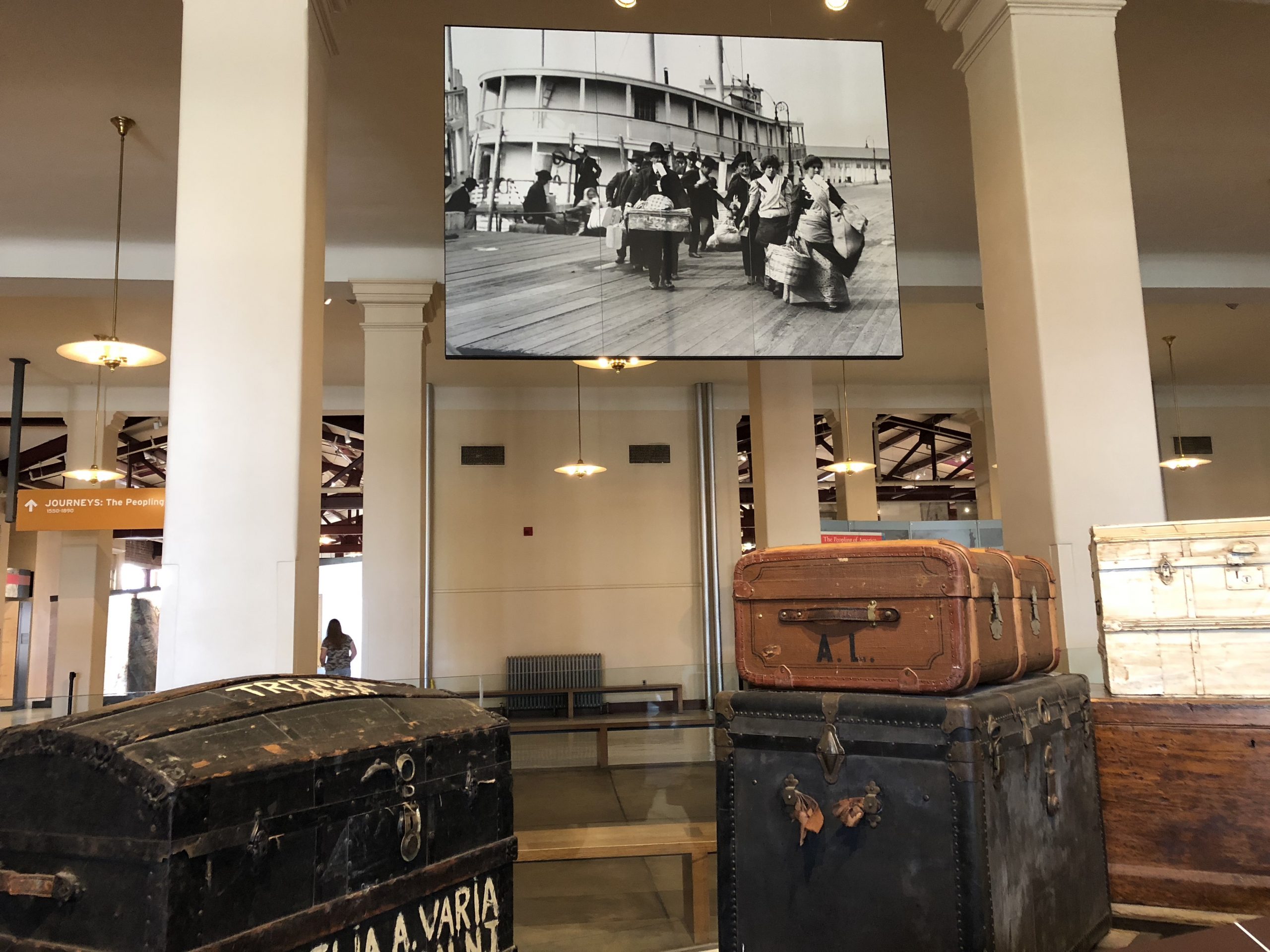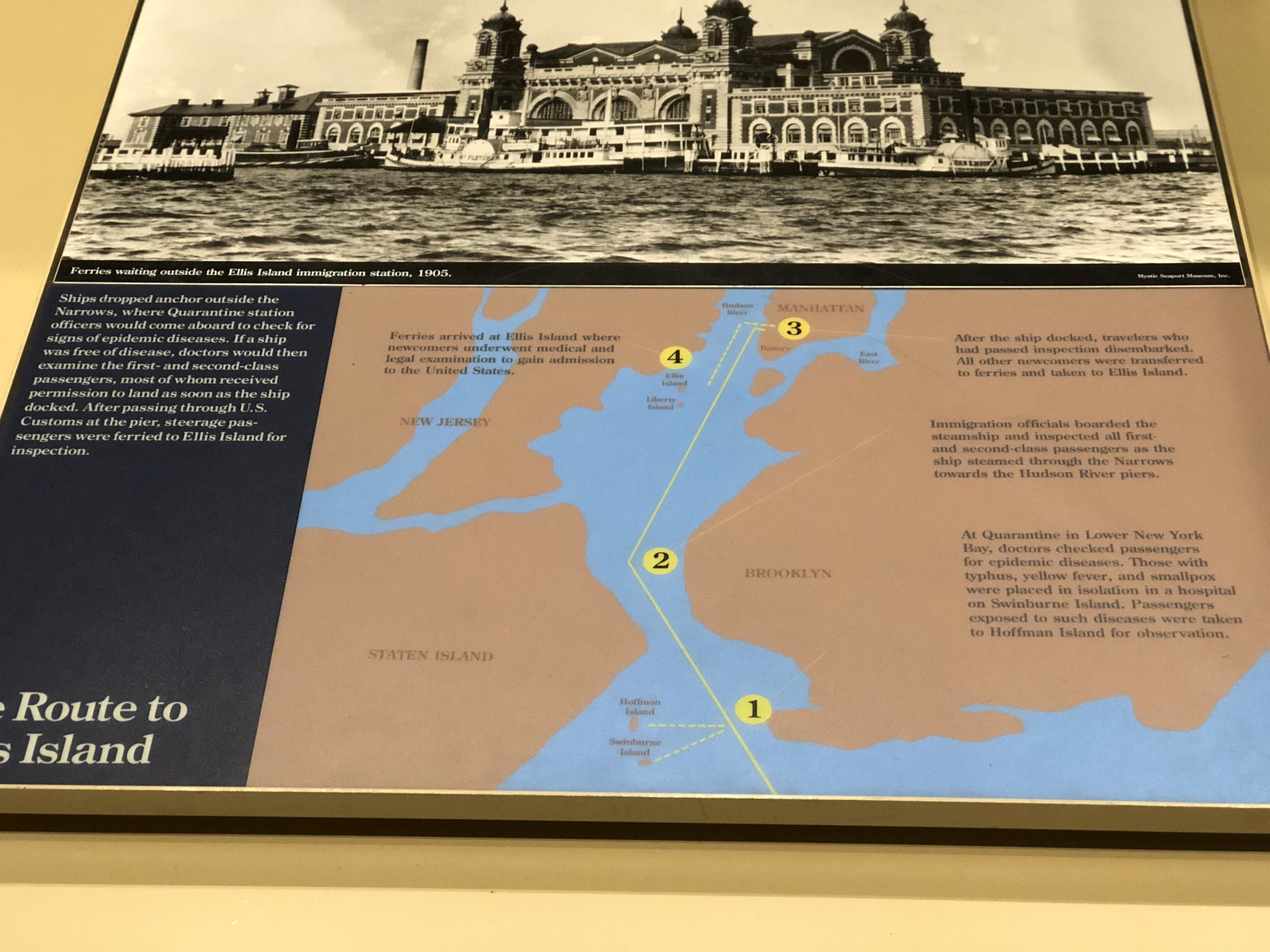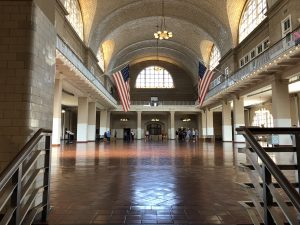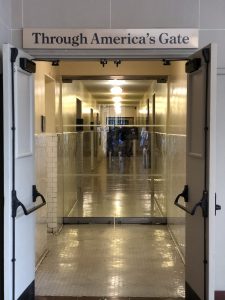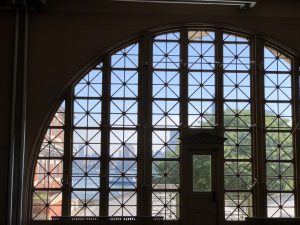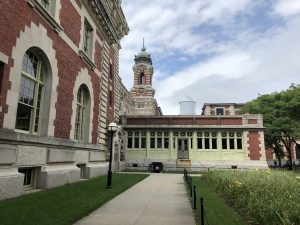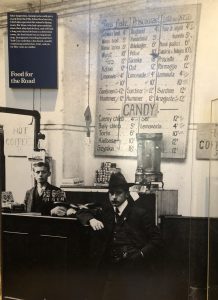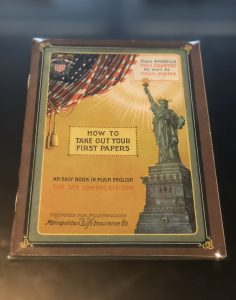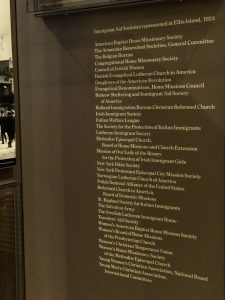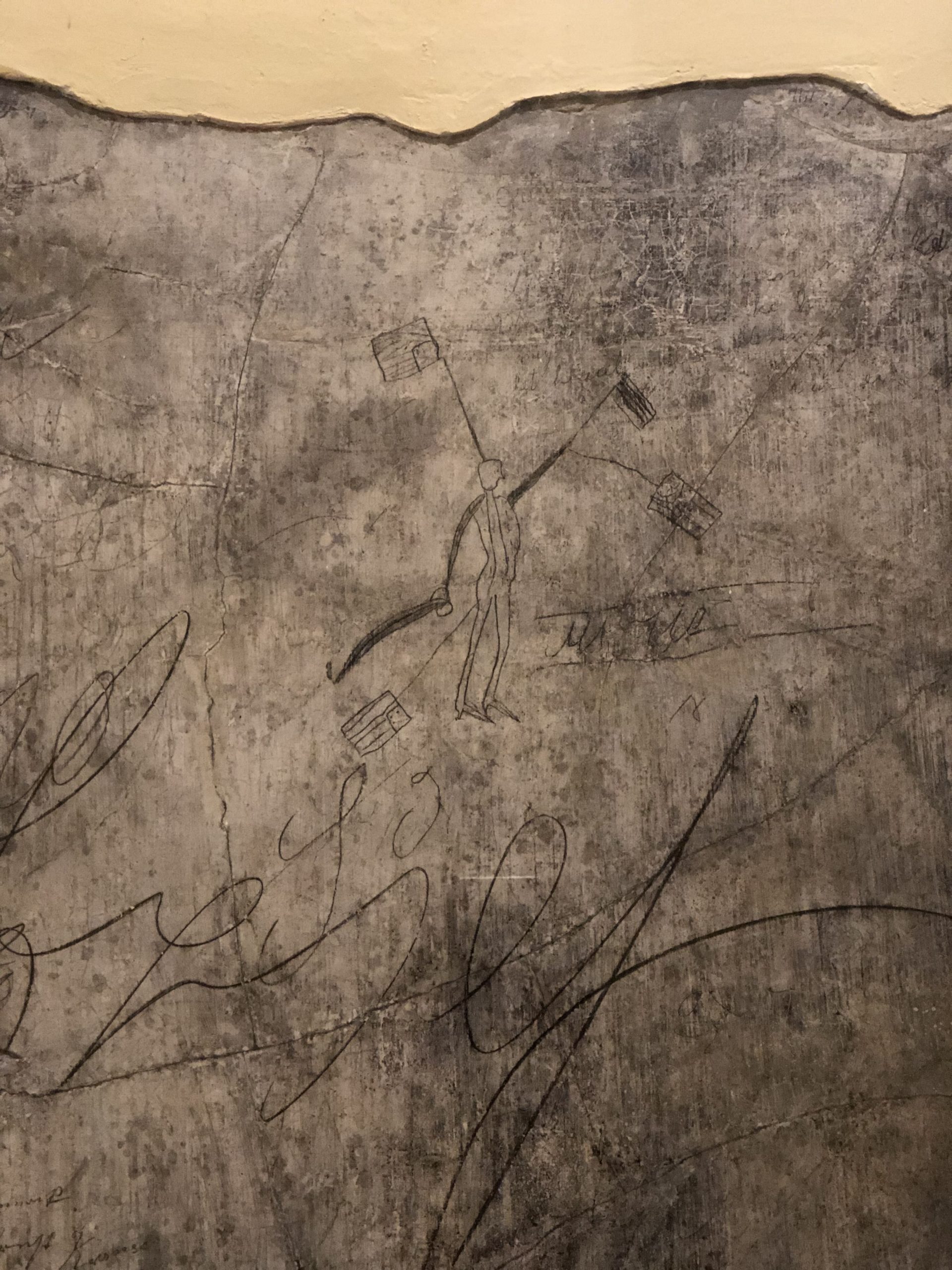NEW YORK EN ROUTE TO THE ‘NEW WORLD’ II: “Through America’s Gate”
My discovery tour through New York continued on a sunny Saturday in August
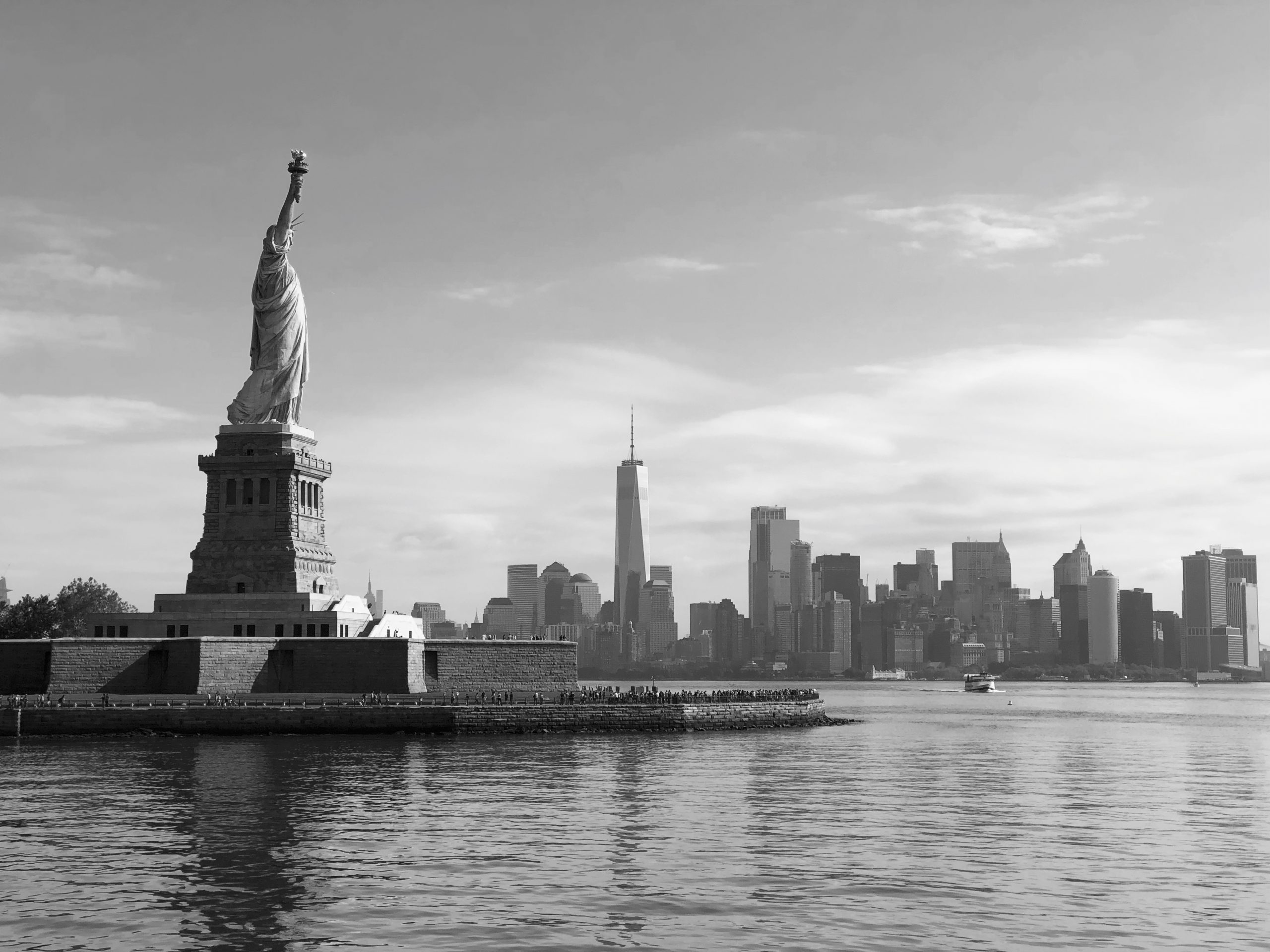
I got up very early to get the first ferry to the Statue of Liberty and Ellis Island. On various blogs as well as on the homepage of the Statue Cruises it was advised to go to the islands as early as possible in the summer months in order to avoid long waiting times.
As I had already seen the Statue of Liberty from the ship before, I bought a combi-ticket to be able to see the landmark at close range this time and to visit the National Immigration Museum on Ellis Island afterwards – the main reason for my trip.
Even though pictures of the skyline of Manhattan and the Statue of Liberty are known from countless photos and postcards, the view from the boat was very impressive. Here I could very quickly understand what an indescribable feeling it must have been for the emigrants to finally see the landmark and skyscrapers of New York after days at sea, the uncertainty and the strain of the ship passage.
Visiting Ellis Island
Up to 1892 Ellis Island replaced the Battery’s Castle Garden as the official immigration depot, where thousands of European and Asian emigrants arrived after crossing the Atlantic by ship. From 1892 until 1954 more than twelve million people entered America through Ellis Island after depositing their luggage in the main building’s hall. Even today, when you enter the building, the first thing you see is the suitcase room which also serves as the entrance to the museum. There you can get for a free audio guide, with which you can make your own tour step by step through all rooms and compartments in the building.
“Through America’s Gate”
As I learned from the guide, doctors checked for epidemic diseases on board the arriving ships. Ill passengers were sent to hospitals on Swinburne or Hoffman Island. Then immigration officials boarded the steamships and inspected all first- and second-class passengers through the Narrows towards the Hudson River piers. After the ship docked, travelers who had successfully passed the inspection could disembark, all other were transferred by ferry to Ellis Island. The immigration authorities on Ellis Island inspected the papers of the arrivals with steerage or third-class tickets and anyone who was traveling with incomplete documents, was in a bad health conditions or had a suspicious appearance. Anyone could be detained on the island indefinitely.
For the majority of immigrants, the inspections started with a medical and legal examination that took three to five hours. During the peak immigration times Ellis Island also had legal hearing rooms, waiting rooms for witnesses, detention quarters and staff officers. The wing with these rooms is fully accessible to the visitors and has retained its appearance from the 1918 to 1924 period.
Read about the earlier part of my fieldwork here
Facilitating the arrival in America
After inspection the emigrants could take advantage of various offers to facilitate the start in New York or the continuation of the journey to other American states. These included food services, exchange offices and ticket shops for railroad travels. Only one third of the immigrants who came to Ellis Island stayed in New York. The majority left for destinations all over the country. For people who had to stay longer on Ellis Island there were dormitory, kitchen and clothes services. Immigrant Aid societies were also represented there
Peak of immigration and closing years
It was very interesting for me, that the peak immigrations years were from 1880 to 1924 and not as I had expected up to 1933. The Immigration Act of 1924, also known as the Johnson-Reed-Act, instituted a policy of national origin quotas. The act restricted the annual admission to 165,000 people per year, down from nearly 1,000,000 in 1920. This legislation allowed emigrants to make their inspections at the overseas American consulates, avoiding the trip to Ellis Island. By the 1930’s – as the audio guide says – the only aliens on the island were those whose papers or visas were not in order, foreign-born criminals or people who were sick. During World War II, arrested enemy aliens and deportees with their families whose papers were not in order were detained in the main building hall, while the Coast Guard took up residence in the baggage and the dormitory rooms. Ellis Island was closed in 1954.
The tour through Ellis Island was very interesting and informative. Images and other material gave me new perceptions about what happened at Ellis Island. Nevertheless as a European citizen and “foreigner” with a perhaps different view and historical background, I would have wished for a more differentiated view of the states of “exiled” or “emigrated” and a more critical portrayal of the living conditions there. Some clues are perhaps given in the wall drawings by the prisoners of Ellis Island, who stayed there from a few months up to several years.



